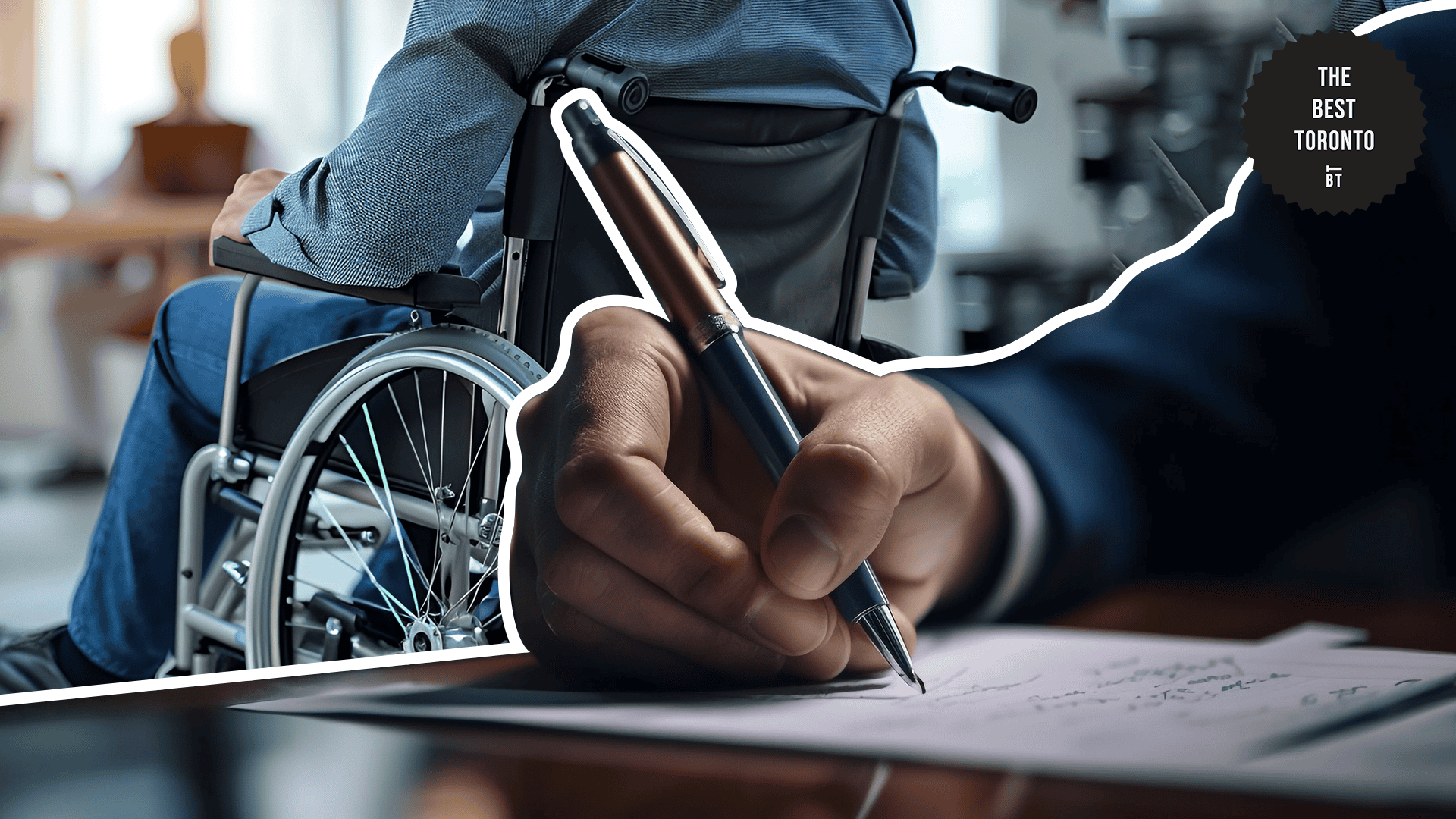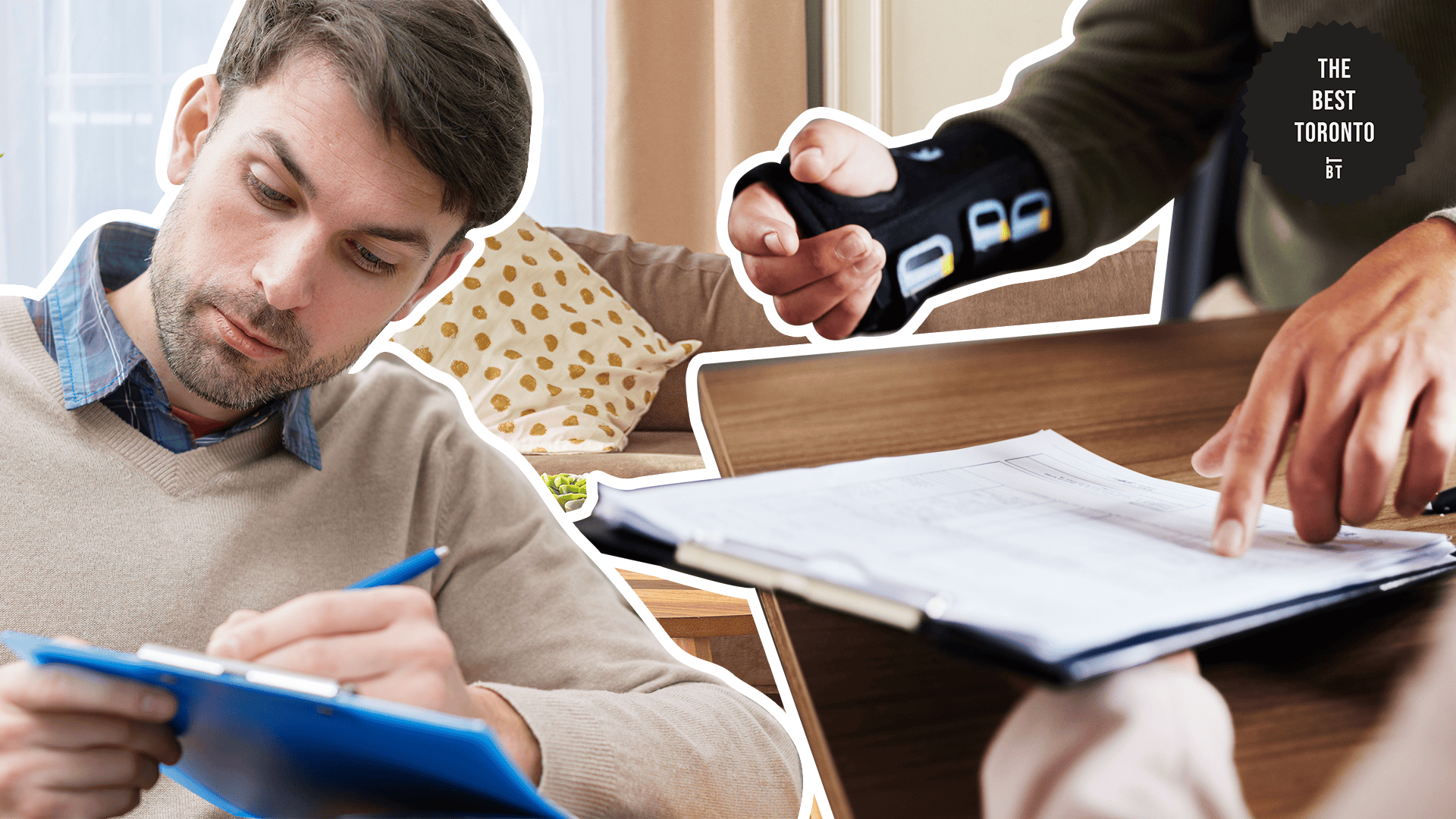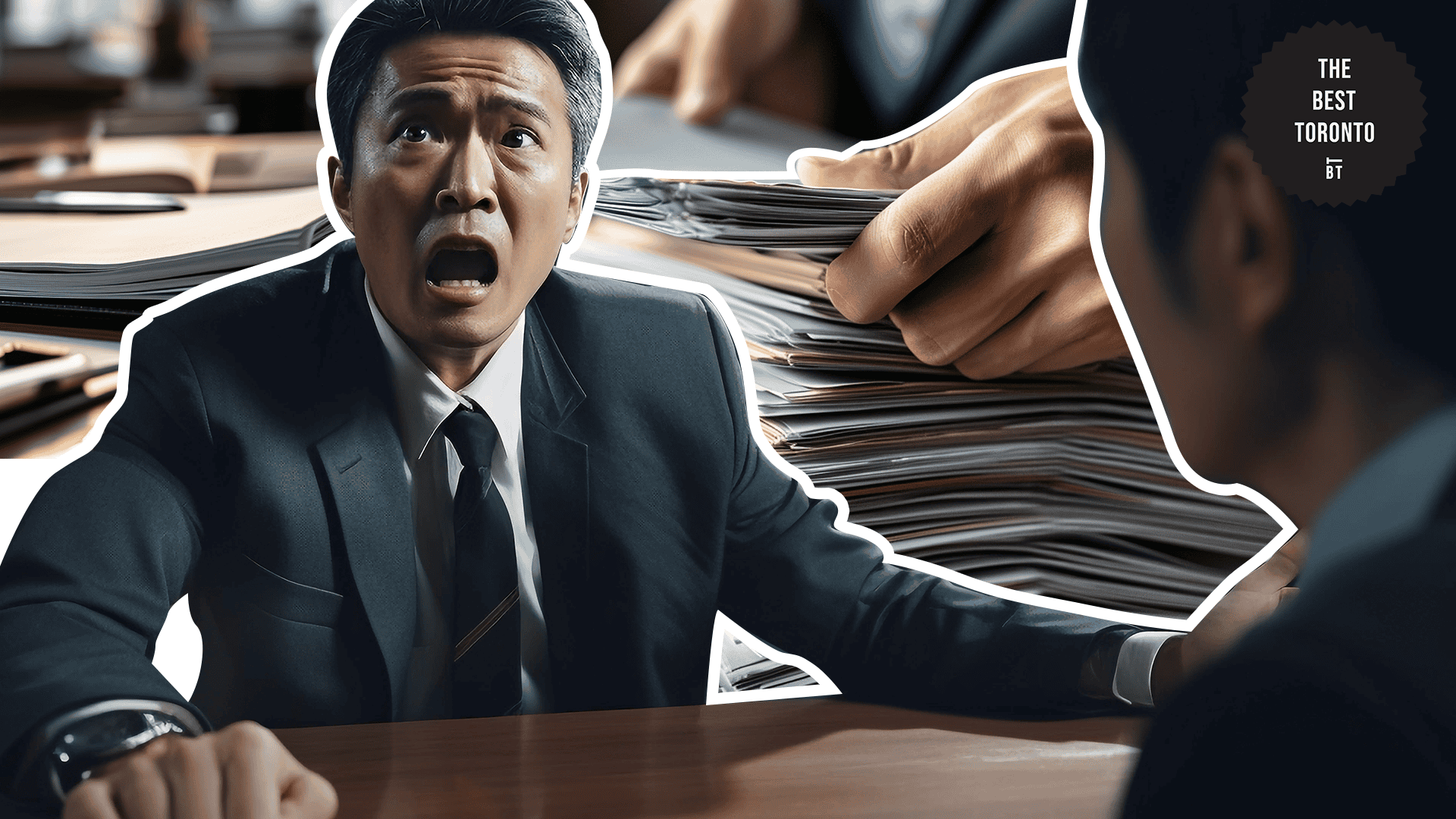Personal injury laws in Toronto are where justice hangs in the balance for those wronged by negligence or malice. These laws aren’t for the faint of heart, covering everything from car wrecks to nasty slips and falls.
To navigate this legal minefield and claim what’s rightfully yours, you’ve got to master these concepts like a pro (or work with a reputable personal injury lawyer). It’s the only way to ensure you get the compensation you deserve.
Filing a Personal Injury Claim in Toronto

So, you’ve taken a tumble in Toronto and now it’s time to play the compensation game. Filing a personal injury claim is your ticket to getting back on your feet.
But this process isn’t a walk in the park. It’s a meticulous process that requires dotting the i’s and crossing the t’s to make sure your claim lands on the right desks.
From gathering evidence to filling out forms, every step counts in this bureaucratic ballet. So lace up those shoes and let’s march through the maze of paperwork together.
Gathering Information About the Accident

Before diving into the legal abyss, you’ve got to take the right steps after suffering a personal injury. This means you’ve got to gather all the details about your injury and the mess it caused.
You’ve got to go about getting intel like when, where, and how it all went down, plus any witnesses who saw the chaos unfold.
On top of that, you’ll need a paper trail as thick as a novel. We’re talking medical records, bills that’ll make your wallet cry, and receipts for every penny spent thanks to the accident.
Notifying the Insurance Company

Once you’ve rounded up all the dirt on your mishap, it’s time to ring up the insurance bigwigs. You’ll need to shoot them a formal notice of your intentions, spilling the beans on your injuries and how the accident went down.
Don’t dilly-dally on this. It’s important to act fast under Toronto’s insurance rules (up to two years from the date of the accident), or you might find yourself out in the cold.
Waiting for Contact from the Claims Adjuster

Once you’ve tossed your claim into the ring, brace yourself for a chat with the insurance company’s claims adjuster. They’re the main people tasked with poking around the accident scene and deciding if your claim holds water.
And you need to get ready for a barrage of requests for more info or paperwork to back up your story. Just play nice and hand over whatever they ask for — it’s key to keeping things moving.
Keeping Detailed Records

As you wade through the bureaucratic swamp, remember: document, document, document! Every chat, every email, and every carrier pigeon message with the insurance company needs to be logged.
In this game, information is power. Keeping meticulous records ensures you have a paper trail of your claim’s journey.
Plus, when the insurance folks come knocking for more info, you’ll be armed and ready.
Determining Fault in Personal Injury Cases

In Toronto personal injury cases, fault determines compensation. The city follows comparative negligence laws, dividing fault based on each party’s contribution.
Factors like actions leading to the incident and expert analysis are considered. Once fault is established, it affects compensation.
Let’s break things down: when dealing with personal injury cases in Toronto, figuring out who’s at fault is important. Fault means figuring out who caused the accident or injury.
This is a big deal because it decides who’s responsible and how much compensation they might owe.
Toronto’s insurance laws play the blame game using a system of comparative negligence. This means fault gets divided up among the players involved, with each party holding a piece of the liability pie based on their level of mess-up.
To untangle the web of blame, insurance bigwigs and legal honchos sift through a mishmash of factors.
They’ll scrutinize everyone’s actions leading up to the calamity, pouring over witness accounts, police reports, and any scraps of evidence like accident scene selfies.
Sometimes, they’ll call in the experts to weigh in on juicy details like road conditions or how fast things were moving. The end goal is to paint a picture of the accident and point fingers at who’s to blame for the mess.
Once fault’s been found, it’s game time for your injury claim. If you’re caught with your hand in the cookie jar, expect your compensation to take a hit.
This might mean if you’re 20% responsible for the chaos, you’re only getting 80% of the payout for your woes.
Knowing the game’s rules is important to playing your cards right in the claims circus. With the help of lawyers who know the ins and outs of personal injury law, you can fight for what’s rightfully yours and chase down fair compensation for your suffering.
The big players in Toronto’s personal injury claims scene hold all the cards. This includes sizing up claims deciding who’s on the hook and doling out the dough to the injured parties.
When you’re caught up in an accident that leaves you banged up, knowing how these insurance behemoths operate can mean the difference between a fair shake and getting the short end of the stick.
Understanding their game can be your ticket to maneuvering through the claims process like a pro.
Initial Notification Acknowledgement and Assignment of Claims Adjuster

When you find yourself tangled in the aftermath of an accident, notifying the insurance bigwigs pronto is key. That means ringing up not just your own insurance crew but also the folks who cover the other party if there’s someone to blame.
Once your claim lands in their laps, they’ll dispatch a claims investigator to dig into the nitty-gritty of what went down.
Investigation and Assessment of Liability

The claims adjuster is the gatekeeper of the claims process, wielding the power to make or break your case. They’re the real detectives of insurance, diving deep into the evidence to untangle the mess and assign blame.
With a magnifying glass in hand, they pore over witness statements, police reports, and medical records, leaving no stone unturned. And don’t be surprised if they come knocking on your door for a chat, probing for every last detail to fill in the blanks.
Their mission is to paint a crystal-clear picture of what went down, pointing fingers at who’s to blame for the bruises and broken bones.
Intermediary Role and Facilitator of Claims

Throughout the claims process, the insurance company acts as an intermediary between all parties involved in the accident.
During this circus of a claims process, they juggle communications, smooth-talk negotiations, and sprinkle compensation like confetti, all in the name of fairness and efficiency. Well, supposedly.
These insurance giants aim to keep the show running smoothly, all while toeing the line of legal mumbo-jumbo and red tape. Whether they actually deliver on that promise is another story.
Claims Advocate and Legal Guide

Given their vested interest in minimizing financial liability, insurance companies may attempt to settle claims for less than their full value. As the injured party, you’ll need to stand your ground and demand what’s rightfully yours.
Understanding the game insurance companies play arms you with the knowledge to outmaneuver them. With a savvy approach and the best personal injury lawyer, you can cut through their red tape and fight tooth and nail for fair compensation.
Understanding Compensation and Damages in Personal Injury Claims

In personal injury cases, compensation is needed for helping those hurt in accidents. It helps cover medical bills and addresses pain and suffering.
Understanding compensation and damages can help ensure fair outcomes and aid in recovery.
Assessment of Damages and Losses

In personal injury claims, compensation is awarded to cover various damages and losses incurred as a result of the accident. First up: the damage assessment.
This means medical bills, lost paychecks, wrecked stuff, the whole shebang. And let’s not forget about the intangibles like pain, suffering, and emotional turmoil — they count too.
Negotiation and Settlement

Once the damage report’s in hand, it’s time to roll up your sleeves for a showdown with the insurance bigwigs or the folks who caused the mess. Your legal gunslinger steps up to bat, armed with evidence to back your play.
When sizing up your claim, it’s not just about cold, hard cash. You’ve got to factor in the intangibles too, like the agony and anguish you’ve endured.
Because hey, those count for something too. At this stage, you’ll need to get ready for the negotiation rodeo, where every dime counts.
Litigation and Court Proceedings

When negotiations hit a dead end, it’s time to strap in for the rollercoaster ride of litigation. Your trusty lawyer becomes your knight in shining armor, battling it out in the courtroom, armed with evidence and arguments to fight for your rightful compensation.
In this legal showdown, the verdict holds the key to your payday, weighing factors like the extent of your injuries, who’s to blame, and how much the accident has messed with your life.
It’s a high-stakes game, but with your legal warrior by your side, you’re ready to face whatever curveballs come your way.
Determination of Fair Compensation

The tumultuous journey of navigating a claim has only one endgame: snagging a fair chunk of change for your troubles. Your legal warrior will stop at nothing to champion your cause and squeeze out every last penny you’re entitled to under the law.
It’s all about knowing the lay of the land when it comes to compensation and damages in personal injury claims. Armed with this knowledge, you can steer clear of pitfalls and make savvy decisions as you wade through the legal quagmire.
Possible Challenges and Disputes in Personal Injury Claims

Personal injury claims can sound like the silver lining in a stormy sky, but let’s not sugarcoat it: they’re a battlefield riddled with traps and hurdles that can trip you up at every turn.
From squabbles over who’s to blame to the headache of putting a price tag on your pain, it’s a wild ride.
We’ll shine a light on the gnarly challenges and disputes that’ll make your head spin, and we’ll arm you with the savvy needed to navigate this legal minefield like a pro.
Disputes Over Liability

One of the most common challenges in personal injury claims is disputes over liability, or who is at fault for the accident. Insurance bigwigs are notorious for playing hardball, squabbling over liability to dodge coughing up cash.
You need to get ready for the long haul because these negotiations can drag on, leaving you stuck in limbo, waiting for a resolution.
To tilt the scales in your favor, arm yourself with ironclad evidence and paperwork to back up your side of the story and stick the blame where it belongs.
Assessment of Damages

Another hurdle in the wild world of personal injury claims is the never-ending battle over damages assessment.
Those insurance folks might try to shortchange you, downplaying the true extent of your pain and suffering, sparking heated debates over what you’re rightfully owed.
Going about this minefield requires a deep dive into your damages, and understanding every ounce of your losses.
Complex Legal Procedures

Personal injury claims involve complex legal procedures and regulations that can be challenging to navigate without proper legal representation.
From drowning in paperwork to duking it out with insurance giants and maybe even duking it out in court, it’s a treacherous journey for the uninitiated.
Statute of Limitations

In Ontario, personal injury claims are bound by the iron grip of the statute of limitations. This ticking time bomb sets a deadline for launching your legal battle.
If you miss it, you can kiss your chance at compensation goodbye. That’s because timing is everything when it comes to getting the right types of personal injury compensation for you.
You’ve got to be on the ball, initiating your claim before the clock runs out. A personal injury lawyer will be your lifeline in this race against time, guiding you through the legal minefield and making sure you don’t miss your shot.





